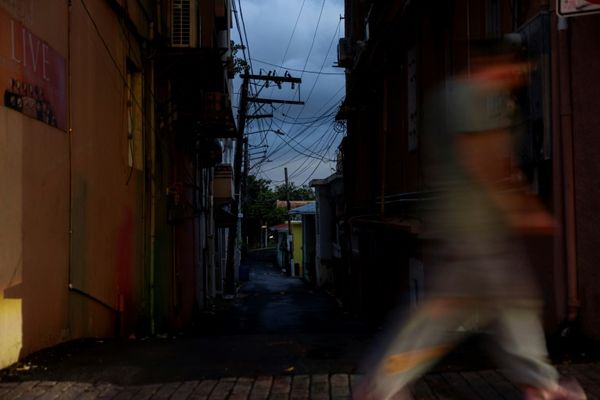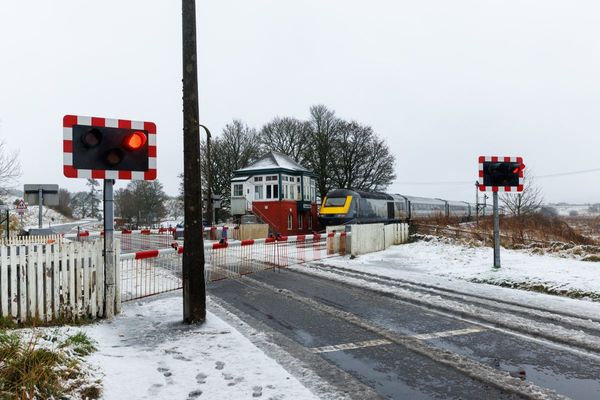
In suburbanized, car-centric parts of the world, including most of the United States, those who cannot drive are often cut off from fully participating in their community. Walking, bicycles and ride-sharing services can only pick up so much slack in areas without real public transit.
"The poorest are cut off from job opportunities, schools, and other services especially in places where transit service quality is poor."
Enter a recent scientific study published by the journal Transportation Research Part D: Transport and Environment. Authored by the National University of Singapore's Xize Wang and Florida Atlantic University's John L. Renne, the paper analyzes a wealth of data about American transportation habits based on the 2017 National Household Travel Survey (NHTS). The researchers found that — although cars are still by far the most widely used method of transportation in the United States — one's ability to access a car depends on many factors beyond a person's control. Foremost among them? Wealth.
"This study demonstrates that travel in the United States can be vastly different based on income," Renne told Salon by email. Among the poorest Americans who cannot afford cars, nearly half of all their trips occur without any form of motorized transportation, while more than a quarter will occur using transit. If households earn less than $25,000 per year, each individual within that household will only travel for roughly 15.6 miles (adjusted) per day, as opposed to the national average of 22.9 miles (adjusted) per day per person.
"These findings are supported by other research that shows that the poorest are cut off from job opportunities, schools, and other services especially in places where transit service quality is poor and walking and bicycling are unsafe," Renne explained.
He added that transit is particularly important to non-Hispanic Black people, who rely on transit for 7.6% of all trips compared to 2.1% for non-Hispanic Whites. "Black residents rely especially on bus services, which in many cities have frequencies of one bus per hour. This has implications for accessing jobs, education, health care, and other vital services."
"Policymakers could think about different methods that can make older adults more willing to take [ride-hailing] services."
In addition to worsening income inequality, the American transportation gap has widened due to factors unique in the history of the early 21st century — in particular, the onset of the Great Recession in 2008 and the outbreak of the COVID-19 pandemic in 2020, which exacerbated economic hardships. Wang identified other variables that accompanied these developments in limiting vehicular transportation access, including "the expansion of transit-oriented developments (TOD) in urban America," "intergenerational lifestyle changes," increasing fuel prices, the growth of e-commerce, the ease of shared mobility and technologies that have made remote working more possible.
The good news is that there are policies which Renne and Wang believe could ameliorate the transportation gap. For one thing, ride-sharing services like Uber and Lyft are helpful, but they could be expanded so more people can utilize them.
"I do think ride-hailing theoretically has the potential of meeting the mobility needs of America's older adults, although the older adults are not the traditional clients of Uber/Lyft," Wang wrote to Salon. "Policymakers could think about different methods that can make older adults more willing to take [ride-hailing] services."
Renne noted that renters rely on transit far more than homeowners (6.1% to 1.7%) and also walk more often than homeowners (17.7% of trips versus 10.4% of trips). As such, it would make sense to plan future residential areas based on this knowledge of citizens' transportation needs.
"Based on the housing crisis in America and the need for more apartments, it makes sense to prioritize apartment buildings near high-frequency transit nodes, also known as transit-oriented development," Renne wrote to Salon. "Given that renters walk and use transit more often, policies should encourage renters to live near transit, which is a win-win because buses and trains will be fuller and public transit will ultimately need less subsidy if more people are using the services."
In addition, as policymakers try to resolve climate change, it will be necessary in general to de-emphasize the use of cars, with Renne predicting "a push for more transit, walking, and bicycling, since these modes emit significantly lower carbon emissions compared to driving."
Because of the physical disabilities that accompany my autism, I am unable to drive. When I asked Renne for his thoughts on what can be done to make transportation easier for people in situations like my own, he replied that "there are many Americans in your same situation and I am not sure if the data allow for an analysis by specific mobility need and/or impairment. This is a topic that I have studied when it comes to preparing vulnerable groups for evacuation planning for hurricanes."
Renne added, "I have not examined the data on disability related to this national travel data. I know others have but that is a shortcoming of our study that I hope we can correct in the future."







